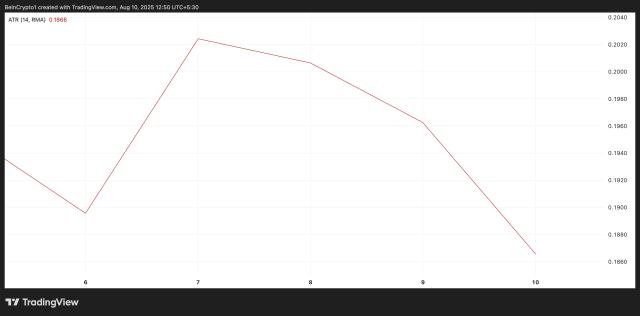Market Trends Insight: Is Ethereum Headed for a "Split" Gas Fee? New Proposal EIP-0000 Introduces a Multi-Dimensional Fee Mechanism: A Technological Ideal or the Beginning of Infrastructure Change?
This article is machine translated
Show original
Market Trend Insight: Is Ethereum Going to "Split" Gas Fee? New Proposal EIP-0000 Introduces Multi-Dimensional Fee Mechanism - Technical Ideal or Infrastructure Transformation Starting Point?
How to easily grasp the market hotspots, technological trends, ecosystem progress, and governance dynamics happening in the Web3 industry? The "Market Trend Insight" column launched by Web3Caff Research will deeply explore and filter current hot events, providing value interpretation, commentary, and principle analysis. Looking beyond the phenomenon to its essence, immediately follow us to quickly capture the frontline market trends of Web3.
Author: wuyue.eth, Web3Caff Research Researcher
Cover: Typography by Web3Caff Research
Word Count: Over 3000 words
Ethereum, as a decentralized blockchain platform, has always been a focal point of community discussion regarding its transaction fee mechanism. Currently, Ethereum uses a single-dimensional Gas-based transaction fee mechanism, where all network resource consumption (including computation, storage, and bandwidth) is unified and converted into Gas units for pricing. This design has certain limitations in handling network congestion and resource allocation, especially in high-load scenarios, where transaction fees fluctuate dramatically, leading to poor user experience and inefficient resource allocation. However, the existing mechanism cannot fully adapt to Ethereum's multi-dimensional resource demands, lacking fine-grained differentiation in fee calculations for different resource consumptions such as computation, storage, and bandwidth. This single fee model restricts the network's scalability during high-demand periods and may lead to over-utilization or inefficient allocation of certain resources. Moreover, as Ethereum evolves towards sharding and Layer2 solutions, the current fee mechanism struggles to meet the complex needs of future network architectures. Therefore, proposing a more flexible and efficient fee market mechanism has become urgent, aiming to optimize resource allocation, improve user experience, and lay the foundation for Ethereum's long-term development.
Fast forward to August 5, 2025, to address these challenges, Anders Elowsson and Vitalik Buterin jointly proposed a new proposal, EIP-0000, aimed at introducing a unified multi-dimensional fee market mechanism to replace the existing single Gas fee model. The proposal addresses fee volatility and uneven resource allocation by more meticulously measuring and pricing network resource usage.
Sector:

Source
Disclaimer: The content above is only the author's opinion which does not represent any position of Followin, and is not intended as, and shall not be understood or construed as, investment advice from Followin.
Like
Add to Favorites
Comments
Share






